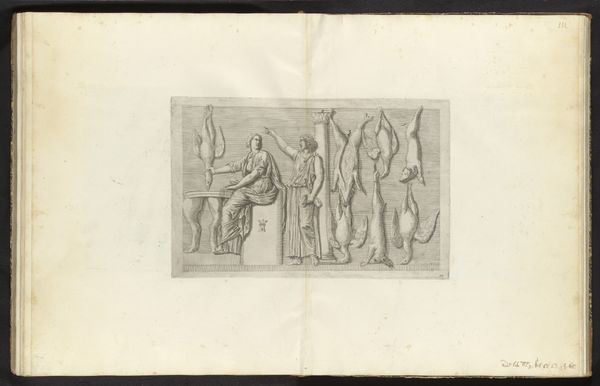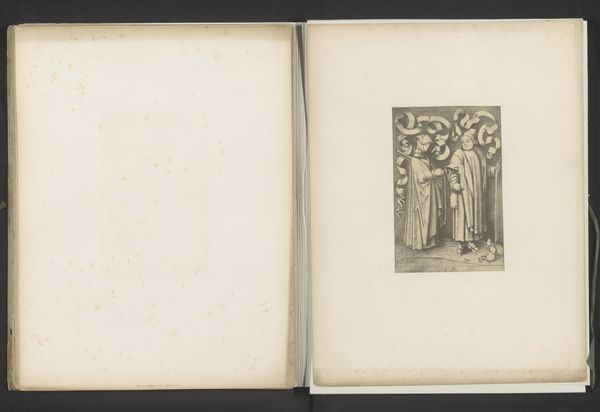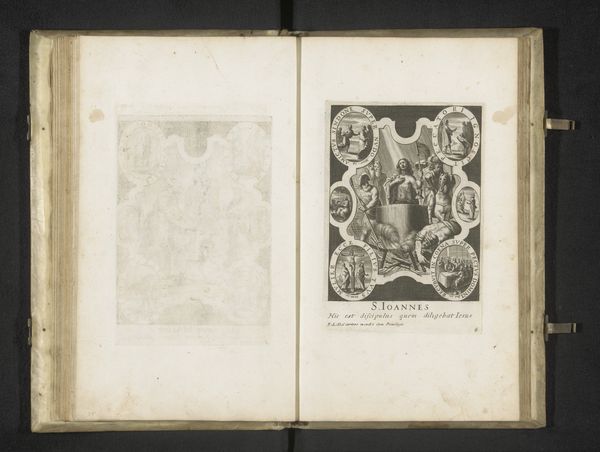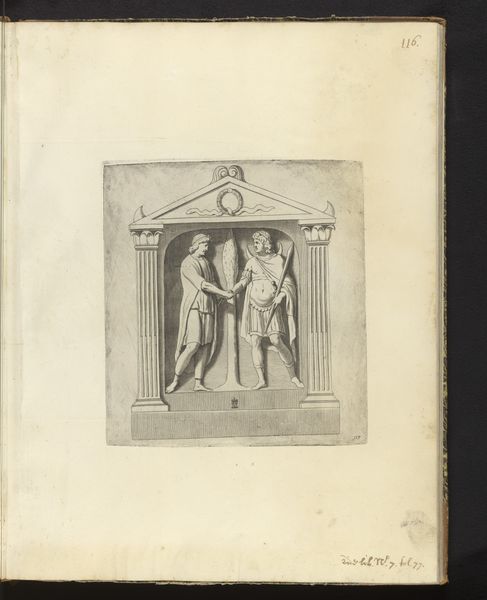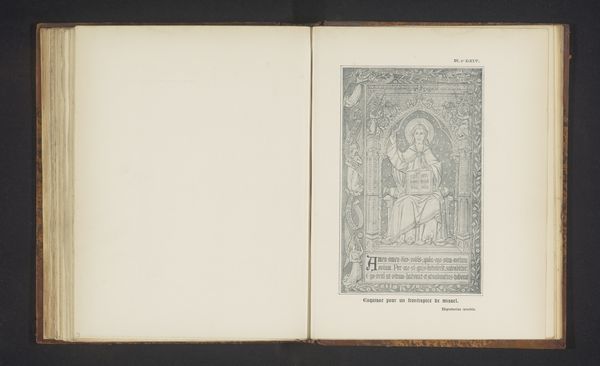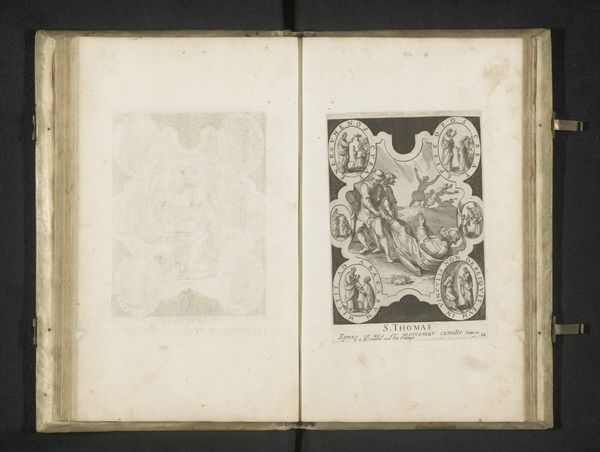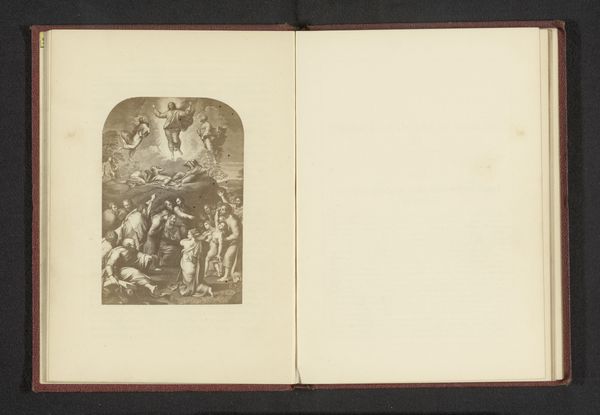
drawing, print, paper, ink, engraving
#
drawing
#
aged paper
#
toned paper
#
baroque
# print
#
pen sketch
#
sketch book
#
paper
#
form
#
personal sketchbook
#
ink
#
geometric
#
pen-ink sketch
#
pen and pencil
#
line
#
pen work
#
sketchbook drawing
#
sketchbook art
#
engraving
Dimensions: height 249 mm, width 150 mm
Copyright: Rijks Museum: Open Domain
Curator: This image presents a 1696 engraving titled "Wapen van Västmanland," an emblem rendered in ink on paper. I'm immediately drawn to the texture. The toned paper and delicate linework create a feeling of something unearthed, precious in its fragility. Editor: Indeed. I’m more taken by what it represents—an imagined space steeped in sociopolitical messaging. Consider how the engraver crafts identity through symbolism, appropriating elements for cultural assertion in a period defined by empire building. Curator: Absolutely. I can’t ignore the craft and means of its production: the paper's weave, the engraver's mark... You can see the individual lines of the burin. And notice how the smoke rises—there’s real technical skill in suggesting form through tonal variation using simple etched lines. It feels distinctly baroque. Editor: Baroque yes, but think of how it speaks to the socio-economic structures of the time. What stories might the artisans, laborers, and suppliers of the ink and paper tell about their own place within Västmanland's social strata? I see coded expressions of power, and inherent hierarchies made tangible through visual language. Curator: I'd push back on coded expression. Rather, I’m taken by the very immediate visual experience of it: The composition is formal, almost severe, yet look closer and it breathes! The textures shift and blend, particularly in the billowing plumes that crown those conical mounds. This gives a sense of place that's tactile rather than didactic. The material itself—the aging paper—testifies to changing historical circumstances. Editor: But isn’t it more complex? What kind of commission was this? For whom was it intended, and what social performance was it meant to enact? The materiality enhances, but also veils, more profound operations of ideology, inscribing social roles and political ambition. That cartouche reading "Insigne Ducatus Wesmanniae" tells its own story of the social function of art in Sweden in the late 17th century. Curator: It seems we approach it from opposite ends, perhaps. You focus on its macrocosm—the sociopolitical arena within which it was produced. While I come back to its inherent qualities as a singular, tactile object: that it can be held, that light plays across its surface, and it whispers of past artisans. Editor: And perhaps the truth, as always, lies in considering both perspectives – seeing the ways an artwork’s existence as a material object shapes, and is shaped by, broader historical forces.
Comments
No comments
Be the first to comment and join the conversation on the ultimate creative platform.

